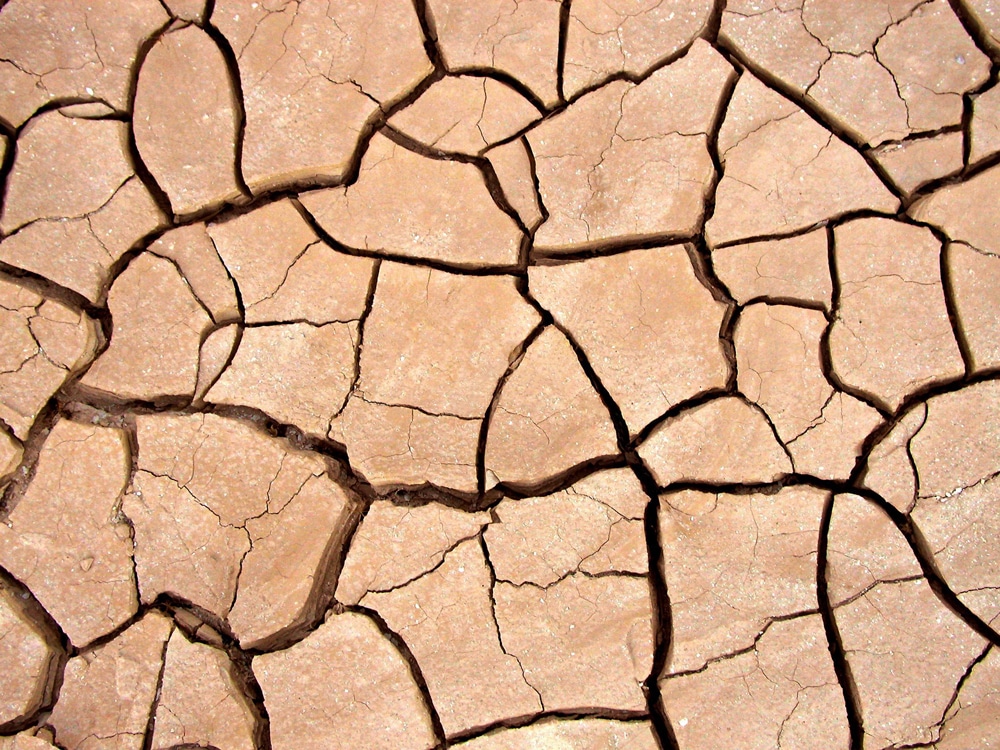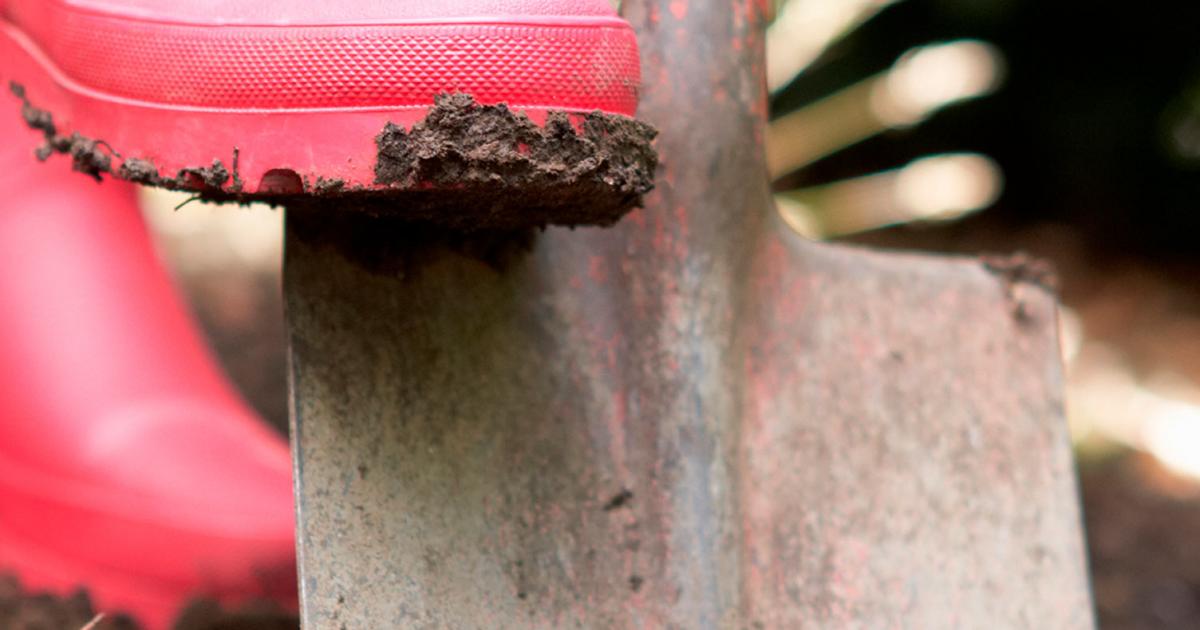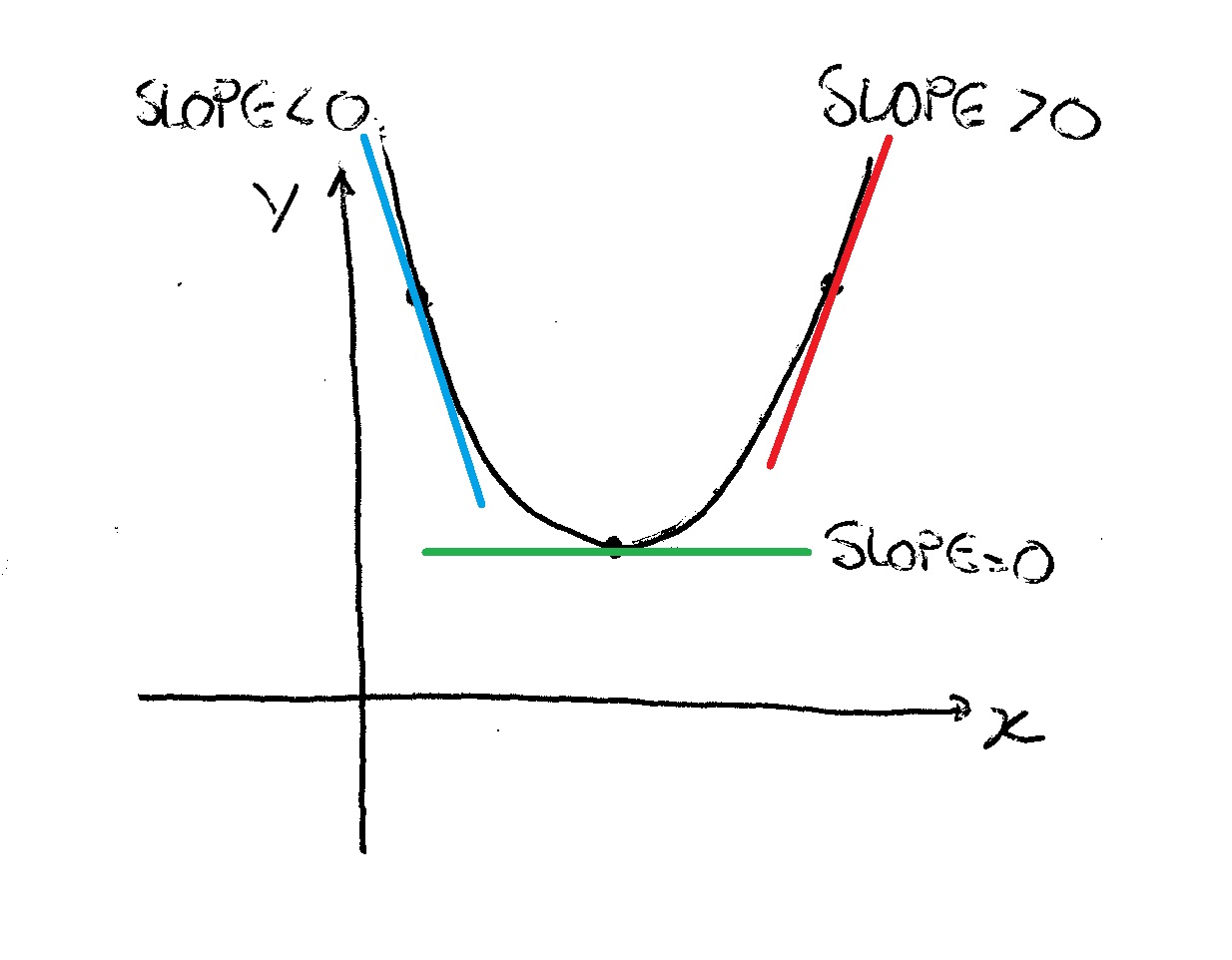The top 8-10 inches of soil, where plants' roots live, determine the success of your gardening efforts. An ideal soil from a plant's perspective is 50% soil matter and 50% open, or pore space (which should be half-filled with water and half left open for air). Clay soil, and soil near recent construction, is often too compact to allow roots to "breath." Adding organic matter to the soil lightens soil structure (also called "tilth").
Soil structure is how the individual clay, silt, and sand particles are arranged, and is impacted by factors such as organic matter. Clay without organic matter is like a flattened deck of playing cards. Adding organic material jumbles the cards, permitting water and oxygen to enter the soil. At this stage, it's well worth thinking about working organic matter into your soil.
For example, if you have very sandy soils, organic matter will add structure to the soil, and improve its ability to retain moisture and nutrients. If you have heavy clay soil, the addition of organic matter will help break up the clay and make it easier to work with. Try to avoid using peat as the source of organic matter; it is better to use Grass Factory Eco Organics compost. Dig the area over, removing any weeds, stones and building waste.
Then compact your soilwhole area – this consolidates the soil, making sure that you are not left with soft spots. It's worth taking time over this part of the job to avoid uneven settling of the soil later on. Level the surface and eliminate drainage problems by making the soil drain away from the house.
Roll the area with a roller to compact soil and to level the desired areas. Once you're satisfied, water the ground and check for puddles. When the soil dries enough to be worked, move soil from the high to the low spots.
Once you have a rich population of soil microbes working for you, caring for your organic lawn will be easier in all ways. You may have to add modest amounts of nitrogen at the end of the growing season so your grass will have what it needs in the spring. You will still have to water, especially in times of less rainfall, just not as much. You will still have to bend down and pluck out the stray weed. But you'll have a healthy, organic lawn thanks to healthy, organic soil.
And you'll have healthy organic soil thanks to your organic lawn. Soil amendments are materials that are worked into the top several inches of soil, to improve drainage and loosen the soil where plants grow. Organic soil amendments can make a world of difference in heavy clay soils. Organic matter breaks down fast in our warm climate, so beds will need regular additions of soil amendments to maintain good soil structure and fertility. This nutrient-rich material serves to moderate the hardness of the mineral component.
When the soil is predominantly clay or sand, the addition of organic matter makes clay soil looser, and easier to work. In clay soils, organic matter additions improve drainage, and allow air to move into the soil more readily. In sandy soil, it helps to hold moisture and nutrients in the root zone of the lawn. Organic matter has the magical quality of being able to help both soil problems.
If you want to know what it looks like, buy a bag of compost at a garden center. High-quality composts are predominantly organic matter. I decided to overseed the lawn with dutch white clover; specifically, I created a mix of 50% peat moss and 50% sharp sand and mixed the clover seeds into this mix.
I spread the mix over the lawn in a thin layer and watered it daily. It took about a year for the clover to really take hold and improve the soil, but now my lawn is 50% clover and 50% lush green grass. The clover has done a great job breaking up the clay soil. I allow the lawn clippings to stay on the lawn, creating a nice layer of organic humus. Before seeding or sodding, it's important to thoroughly work the soil. Amend poor soils, such as heavy clay, by adding organic matter.
Sources include compost, rotted manure, peat, and quality topsoil. Sand is not suggested as a material to improve clay soils for home lawns. The best sandy soil amendments are ones that increase the ability of the sandy soil to retain water and increase the nutrients in the soil as well. Sandy soils can usually benefit from the addition of organic material, such as well rotted manure or compost which will help the soil to retain both moisture and nutrients. Incorporating 2 inches of organic material into the top 6 inches of the soil before seeding will significantly improve the texture of soils with a high sand content.
Peat moss and sand are NOT recommended for improving clay soil, and purchased topsoil is frequently no better than your existing soil. Purchased topsoil is useful for creating raised beds, but for most landscaping needs, it is better to amend the existing soil with organic materials. If you do bring in topsoil, be sure to mix it thoroughly with the native soil. If new soil is just spread over clay, plants will not root into the clay, and the plants will dry out in hot weather.
Be aware that unsterilized topsoil may contain weed seeds. Bark, sawdust, manure, leaf mold, compost and peat moss are among the organic amendments commonly used to improve clay soil. Two or three inches of organic materials should be spread and rototilled, forked or dug into the top six or seven inches of your garden beds. At the opposite end of the scale from sandy soil are clay soils.
These hold water and nutrients very well but don't drain as well as sandy soils, especially if compacted, a common situation for lawns with a clay soil base. Estimates, again from Ohio State University Extension, suggest that grass clippings can supply at least 25% of your lawn's nitrogen needs. That, coupled with a yearly application of compost, should be enough to keep it healthy and green. Compaction is most likely to occur with heavier soils like clay and loam, but when heavy equipment is used, sandy soils can become compacted.
These are soil particles that are packed closely together. The problem may be compounded by events that have happened to the soil over the course of years. The pore spaces are reduced to the point that air and water cannot move freely and plant roots cannot grow easily into the surrounding soil. The soil could remain overly wet longer than is healthy for the plants growing there. Once peak growing season ends in late summer, gardeners should plant a cover crop to build better soil.
Cover crops like legumes, annual ryegrass, alfalfa, and buckwheat grow throughout the fall and winter, adding nutrients to the soil, improving drainage, and reducing soil compaction. Mow them before they go to seed, and turn the soil over in the springtime before planting again. Organic matter such as manure helps sandy soil to retain moisture and nutrientsOrganic matter is a kind of cure-all in the garden. Any organic matter will work to build soil structure and its ability to hold onto water. Compost and manure are preferred because they are rich in nutrients, which they drip-feed to your plants. Over time, they'll also help to increase the pH of acidic sandy soils.
Clay's potential as one of the best soil types for plant growth lies in its unique properties. Managed well, clay soil typically requires less irrigation and less fertilizer, and leads to healthier plants all around. Clay, silty and sandy are three other common soil types and the right combination of them makes up loamy soil.
Sandy soil particles are large which causes water and nutrients to drain too quickly out of the soil. When doing your soil jar test, sandy soil will be the first layer to settle at the bottom and should make up 40% of the jar's soil. Since sandy particles are heavier, you'll begin to see that layer a few minutes after you set the jar down to settle. It's easiest to see all the layers if you mark each layer as they settle. Silt will settle on top of the clay particles and usually looks darker in color. Your silt layer will settle in about 4-5 hours and should make up around 40% of your soil.
Clay soil has tiny particles which creates poor drainage in the soil if you have too much of it. Since clay particles are the smallest of the three soil types in your jar test you'll see the layer on top. You should also have some trace amounts of organic matter floating just over the clay layer or at the top of your jar. I always see things on how to work with sandy, silty, or clay soils, practically nothing on peat soils. I moved to an area this last Fall, that had a lot of glacier activity and is a meadow or grass land now. We would like to grow a garden, but we have black peat soil for about 14 feet down.
I used a home soil test and found no nitrogen in the soil. There is some phosphorus and a small amount of potassium. What should we do to our soil to be able to grow a vegetable garden and fruit trees? Compost is decomposed organic matter, and it is the best thing you use to improve the health of garden soil. Before planting every year, ensure sufficient nitrogen by counting all the sources you've added. Organic fertilizers, such as blood, seed, or feather meal, are sources of concentrated nitrogen.
Fall or spring legume cover crops transfer nitrogen from the atmosphere to the soil. Manures or green grass clippings, incorporated as amendments, provide nitrogen as well. Compost, on the other hand, does not supply enough garden nitrogen. While compost is great for improving overall soil health, additional nitrogen sources are needed when using compost as an amendment.
Chop over-wintered cover crops directly into spring soils a few weeks before planting. During the growing season, sow a quick-growing cover crop, such as buckwheat, to fill the gap between spring and fall crops. When it's time to plant, pull the buckwheat cover and use it as a mulch for fall garden beds. Your soil test or extension agent can help you determine the right amount of organic matter for your soil. As a general rule, when possible, add a layer of 3 to 6 inches of organic matter on your soil before planting, and work it down into the top 10 to 12 inches—where most roots grow. In following years, build on your efforts by adding 1 to 3 inches of organic mulch as a topdressing each year.1 As it decomposes, it continues to gradually improve clay soil.
A wide variety of materials have been described as soil amendments due to their ability to improve soil quality. Many soil amendments come in the form of certified organic products. Soil amendments of almost every description are readily available from online stores, nurseries as well as garden supply stores. A high clay soil holds on to nutrients, stays wet longer, and is slow to warm up and dry off in spring.
These soils are slimey and can be formed in your hand when wet. Avoid working high clay soils when wet – this leads to compaction. Clay soils are made of extremely small particles that are packed close together.
When lawns growing on clay soils receive even moderate foot traffic, the particles mash together in what is known as compaction. There is little room for water and air, because the voids are reduced. The limited space tends to fill up with water after a rainfall, leaving little or no oxygen for the root system. Water does not pass quickly through clay soils, and often will move downward only after the soil voids are completely saturated. For centuries people have been adding things to poor soils to improve their ability to support healthy plant growth. Some of these materials, such as compost, clay and peat, are still used extensively today.
Many soil amendments also add nutrients such as carbon and nitrogen, as well as beneficial bacteria. Additional nutrients, such as calcium, magnesium and phosphorus, may be augmented by amendments as well. This enriches the soil, allowing plants to grow bigger and stronger. Organic matter in soil serves as food for earthworms, insects, bacteria and fungi-they transform it to soil nutrients and humus. Through this decomposition process, materials are made available as foods to growing plants. In finely textured clay soils, organic material creates aggregates of the soil particles, improving drainage and making it easier to work.
Earthworms are especially helpful in making and keeping soil porous and well draining, said Brewer. Mulch helps your soil retain moisture, prevents compaction, and discourages weeds. The material also breaks down over time, adding beneficial nutrients to your soil.
Whether you mulch with wood chips, leaves, pine needles, or another organic material, the effort will keep your garden healthy throughout the growing season. Anyone who has dealt with compacted garden soil knows just how frustrating it can be. Not only can it be tricky to get a shovel or trowel into the dirt, but it can also be tricky for plants to grow in it. Compacted soil can be a common issue for soils that contain a high amount of clay and also receive a high amount of foot traffic.
How To Improve Hard Soil For Grass This type of soil can get waterlogged, or alternatively, have trouble drinking up water at all. One method of improving the quality of soils that have been compacted is to cultivate the compacted soil and mix compost through it. This process should help to add more nutrients to the soil, give it aeration, and allow plants to have an easier job of growing within it. For starters, fall mulching gives you the upper hand on spring weeds. Pull weeds that do emerge in the spring early and quickly, when they are small and easy to manage. If not noxious–that is, not spreading vigorously by root or stem–I suggest laying them right back on the soil surface and covering them with from 2 to 4 inches of organic mulch.
Covering garden beds right from the start gives you the jump on garden weeds, while feeding the soil with organic material at the same time. Gypsum is easily applied to the soil surface with a regular lawn spreader. It's an ideal amendment for improving soil structure and relieving compaction in existing lawns and gardens.





















































